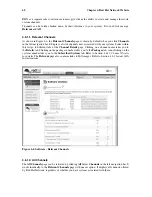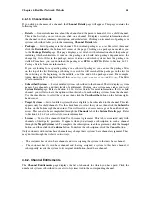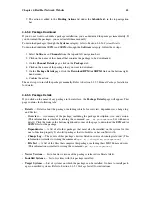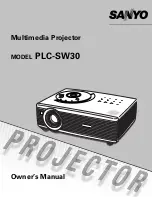
58
Chapter 4. Red Hat Network Website
4.5.2.1. Apply Errata Updates
Errata Alerts include a list of updated packages that are required to apply the Errata Update. To apply
Errata Updates to a system, the system must be entitled.
You can apply all applicable Errata Updates to a system by clicking on
Systems
=>
Systems
in the
top and left navigation bars. Click on the name of an entitled system, and click the
Errata
tab of the
resulting
System Details
page. When the Relevant Errata list appears, click
Select All
then the
Apply
Errata
button on the bottom right-hand corner of the page. Only those Errata that have not been
scheduled or were scheduled and failed or canceled are listed. Updates already pending are excluded
from the list.
In addition, Enterprise-level users can apply Errata Updates using two other methods:
•
To apply a specific Errata Update to one or more Enterprise-level systems, find the update within
the Errata lists or by searching. In the table, click on the number of systems affected, which will
take you to the
Affected Systems
tab of the
Errata Details
page. Then, individually select the
systems to be updated and click the
Apply Errata
button. Double-check the systems to be updated
on the confirmation page, then click the
Confirm
button.
•
To apply more than one Errata Update to one or more systems, select the systems from a
Systems
list and click the
Update List
button. Click the
System Set Manager
link in the left navigation
bar, then click the
Systems
tab. After ensuring the appropriate systems are selected, click the
Er-
rata
tab, select the Errata Updates to apply, and click the
Apply Errata
button. You can select to
apply the Errata as soon as possible (the next time the Red Hat Network Daemon on the client sys-
tems connect to RHN) or schedule a date and time for the Errata Updates to occur. Then click the
Schedule Updates
button. You can follow the progress of the Errata Updates through the
Pending
Actions
list. Refer to Section 4.7
Schedule
for more details.
Important
If you use scheduled package installation, the packages will be installed via the RHN Daemon. You
must have the RHN Daemon enabled on your systems. Refer to Chapter 5
Red Hat Network Daemon
for more details.
The following rules apply to Errata Updates:
•
Each package is a member of one or more channels. If a selected system is not subscribed to a
channel containing the package, the package will not be installed on that system.
•
If a newer version of the package is already on the system, the package will not be installed on that
system.
•
If an older version of the package is installed, the package will be upgraded.
4.5.2.2. Errata Details
If you click on the Advisory of an Errata Alert in the
Relevant
or
All
pages, its
Errata Details
page
appears. This page is further divided into three tabs:
•
The
Details
tab provides the Errata Report issued by Red Hat. It describes the problem and solution
and lists the channels it affects. Clicking on a channel name displays the
Packages
tab of the
Channel Details
page. Refer to Section 4.6.1.3
Channel Details
for more information.
Summary of Contents for ENTERPRISE LINUX
Page 1: ...Red Hat Network Enterprise User Reference Guide 2 1 ...
Page 14: ...6 Chapter 1 What is Red Hat Network ...
Page 42: ...34 Chapter 2 Red Hat Update Agent ...
Page 46: ...38 Chapter 3 Red Hat Network Alert Notification Tool ...
Page 78: ...70 Chapter 5 Red Hat Network Daemon ...
Page 80: ...72 Chapter 6 Using Red Hat Network with Red Hat Linux 6 2 ...
Page 94: ...86 Chapter 7 Red Hat Network Registration Client ...
Page 100: ...92 Glossary ...
Page 104: ......
















































